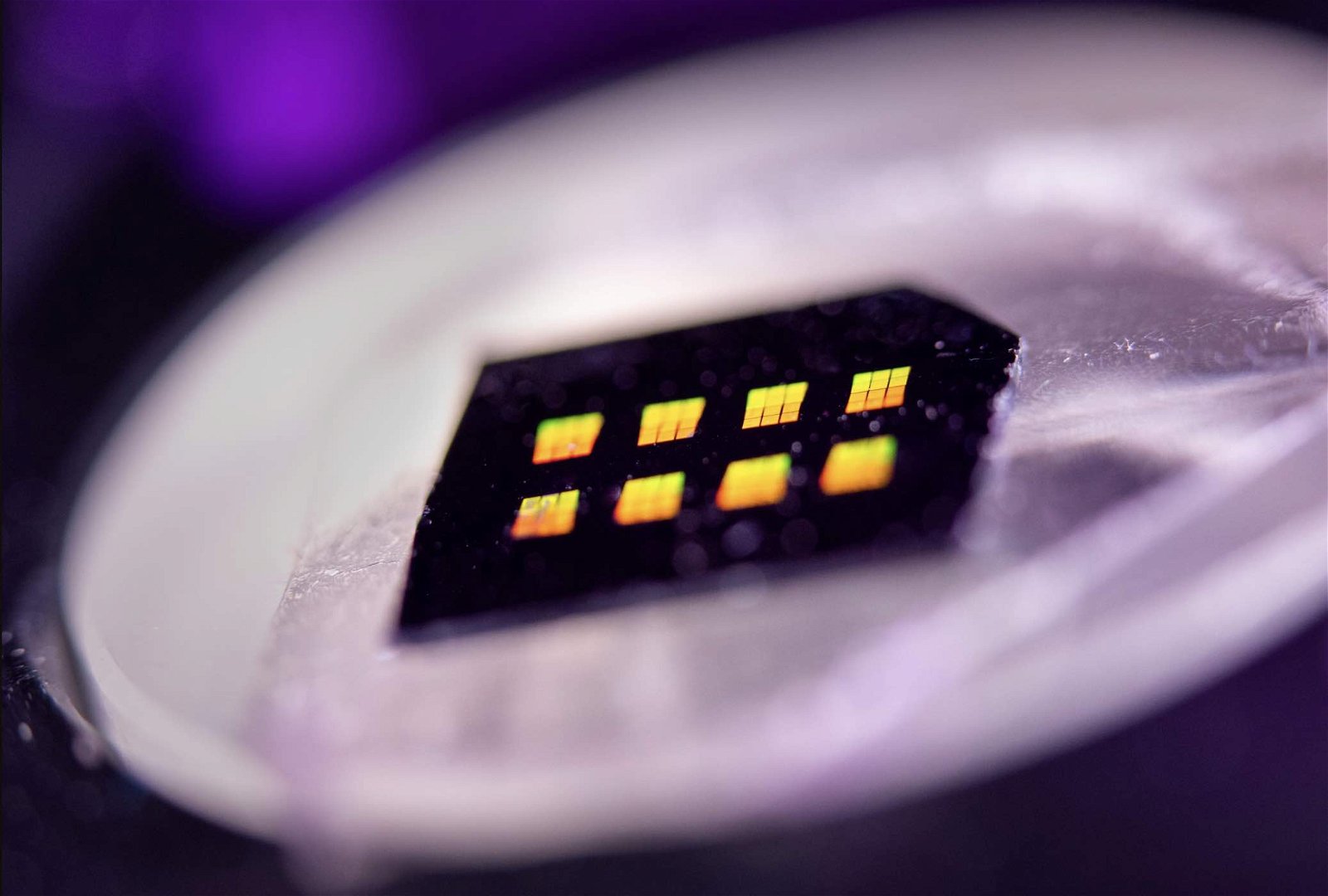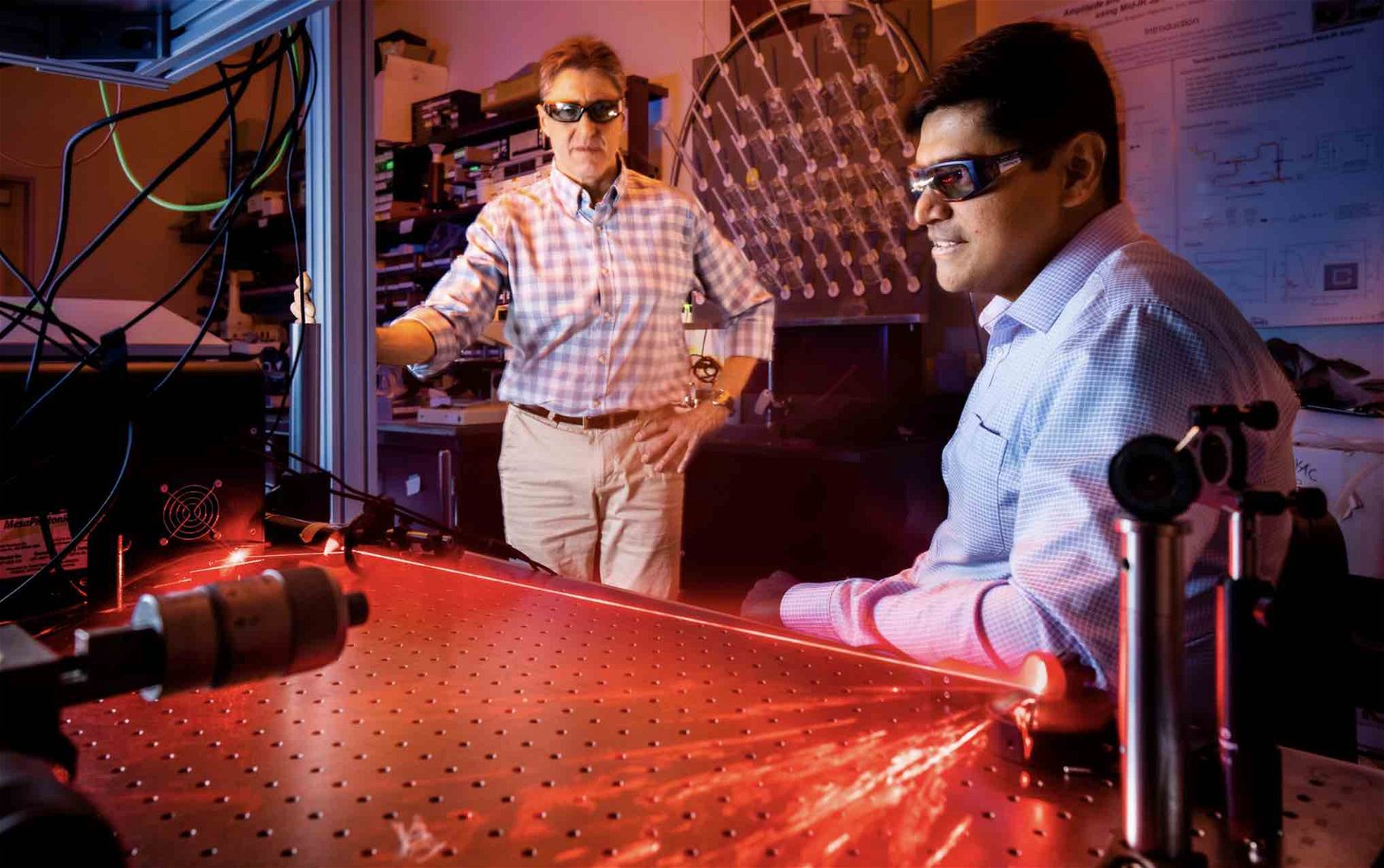Scientists in New Mexico say they have harnessed the ability to steer light pulses from conventional, incoherent sources in what is described as a significant breakthrough in the fields of ultrafast optics and nanophotonics.
The achievement was reported by researchers at Sandia National Laboratories, a research facility of the U.S. Department of Energy (DoE) National Nuclear Security Administration in Albuquerque, New Mexico.
Prasad Iyer, the lead author of a newly published paper describing the research, says that the Sandia scientists are the first to successfully prove that ultrafast beam-steering of incoherent light can be achieved. Iyer and the team’s paper appeared in the latest issue of Nature Photonics.
What is Incoherent Light?
Coherence is the property of waves whereby their waveform and frequency are identical. By contrast, incoherent light refers to instances where the photons emitted from a light source are produced randomly and at different wavelengths.
From light bulbs and LEDs to other time-honored sources of electrical illumination, the most common sources produce incoherent light. In contrast, the light produced by a laser does not extend or scatter beyond the path of its focused beam. This is because the photons produced by the laser possess the same frequency and phase.
In the Sandia team’s recent research, a source of incoherent light was successfully controlled with the aid of metasurfaces, a variety of artificially composed materials built from tiny semiconductor components known as meta-atoms. These tiny “building blocks” of semiconductors can be designed to perform a range of functions, which includes the reflection of light with surprising effectiveness.


While past studies have demonstrated that rays of light can be steered, devices built for this purpose were designed specifically for doing so with light produced by coherent sources. The Sandia team wondered whether light similar to that generated by an LED could be produced from a semiconductor device and then be steered in such a way that an angle could be set through the control of voltage, shifting the angle of steering to maximum speeds.
Ultrafast Beam-Steering of Light
In order to achieve this, the Sandia team employed a semiconductor metasurface in which tiny “quantum dots” were embedded that each produced a minuscule source of light. Controlled with a pulsed light source, the team was able to manipulate the way the light was reflected from the metasurface, which allowed them to steer the light waves the quantum dots produced in a variety of directions, albeit for a very short duration (no more than one trillionth of a second).
The duration attained was nonetheless plenty enough to achieve what the Sandia team was aiming for: the successful steering of the incoherent light beam prevented its diffusion and resulted in a bright light observed at a distance.
Controlling light through ultrafast beam-steering could help to facilitate new advances in the production of affordable, low-energy light sources like LEDs and could also improve technologies that include holograms, laser optics, and communication systems and may even have applications that extend to self-driving automobiles.
Considering that such novel means of controlling light was once deemed impossible, the Sandia team says their proof-of-principle marks a breakthrough in the fields of ultrafast optics and nanophotonics.
Achieving the Impossible
A feat previously considered impossible, the team’s proof-of-principle work paves the way for developments in the fields of nanophotonics and ultrafast optics. The ability to dynamically control incoherent light sources and manipulate their properties through ultrafast beam-steering offers a wide range of applications.
Iyer said in a statement that the team’s findings could mean that “steering light emission with low-size-and-weight metasurface-LED displays could be made possible” thanks to the new discovery.
“We can use the light emitted in a better way rather than just turning them off and on,” he added.
“Imagine an LED light bulb that can emit light to follow you,” said Igal Brener, lead scientist in the study and a co-author of the team’s new paper. “Then you wouldn’t waste all that illumination where there’s nobody [around].”
“This is one of the many applications that we dreamed about with DOE years ago for energy efficiency for office lighting,” Brener said in a statement.
The team’s research was described in a new paper that appeared in the current issue of Nature Photonics, and received funding from the DoE’s Office of Science.
Micah Hanks is the Editor-in-Chief and Co-Founder of The Debrief. He can be reached by email at micah@thedebrief.org. Follow his work at micahhanks.com and on Twitter: @MicahHanks.

